Entry Database : PDB / ID : 4j8sTitle Crystal structure of human CNOT1 MIF4G domain in complex with a TTP peptide CCR4-NOT transcription complex subunit 1 Tristetraprolin Keywords / / / / Function / homology Function Domain/homology Component
/ / / / / / / / / / / / / / / / / / / / / / / / / / / / / / / / / / / / / / / / / / / / / / / / / / / / / / / / / / / / / / / / / / / / / / / / / / / / / / / / / / / / / / / / / / / / / / / / / / / / / / / / / / / / / / / / / / / / / / / / / / / Biological species Homo sapiens (human)HOMO SAPIENS (human)Method / / Resolution : 1.55 Å Authors Frank, F. / Fabian, M.R. / Rouya, C. / Siddiqui, N. / Lai, W.S. / Karetnikov, A. / Blackshear, P.J. / Sonenberg, N. / Nagar, B. Journal : Nat.Struct.Mol.Biol. / Year : 2013Title : Structural basis for the recruitment of the human CCR4-NOT deadenylase complex by tristetraprolin.Authors : Fabian, M.R. / Frank, F. / Rouya, C. / Siddiqui, N. / Lai, W.S. / Karetnikov, A. / Blackshear, P.J. / Nagar, B. / Sonenberg, N. History Deposition Feb 14, 2013 Deposition site / Processing site Revision 1.0 May 8, 2013 Provider / Type Revision 1.1 Jul 24, 2013 Group Revision 1.2 May 25, 2016 Group Revision 1.3 Feb 28, 2024 Group / Database referencesCategory chem_comp_atom / chem_comp_bond ... chem_comp_atom / chem_comp_bond / database_2 / struct_ref_seq_dif Item / _database_2.pdbx_database_accession / _struct_ref_seq_dif.details
Show all Show less
 Yorodumi
Yorodumi Open data
Open data Basic information
Basic information Components
Components Keywords
Keywords Function and homology information
Function and homology information Homo sapiens (human)
Homo sapiens (human) HOMO SAPIENS (human)
HOMO SAPIENS (human) X-RAY DIFFRACTION / Sulfur SAD / Resolution: 1.55 Å
X-RAY DIFFRACTION / Sulfur SAD / Resolution: 1.55 Å  Authors
Authors Citation
Citation Journal: Nat.Struct.Mol.Biol. / Year: 2013
Journal: Nat.Struct.Mol.Biol. / Year: 2013 Structure visualization
Structure visualization Molmil
Molmil Jmol/JSmol
Jmol/JSmol Downloads & links
Downloads & links Download
Download 4j8s.cif.gz
4j8s.cif.gz PDBx/mmCIF format
PDBx/mmCIF format pdb4j8s.ent.gz
pdb4j8s.ent.gz PDB format
PDB format 4j8s.json.gz
4j8s.json.gz PDBx/mmJSON format
PDBx/mmJSON format Other downloads
Other downloads 4j8s_validation.pdf.gz
4j8s_validation.pdf.gz wwPDB validaton report
wwPDB validaton report 4j8s_full_validation.pdf.gz
4j8s_full_validation.pdf.gz 4j8s_validation.xml.gz
4j8s_validation.xml.gz 4j8s_validation.cif.gz
4j8s_validation.cif.gz https://data.pdbj.org/pub/pdb/validation_reports/j8/4j8s
https://data.pdbj.org/pub/pdb/validation_reports/j8/4j8s ftp://data.pdbj.org/pub/pdb/validation_reports/j8/4j8s
ftp://data.pdbj.org/pub/pdb/validation_reports/j8/4j8s Links
Links Assembly
Assembly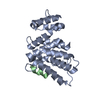
 Components
Components Homo sapiens (human) / Gene: AD-005, CDC39, CNOT1, KIAA1007, NOT1 / Plasmid: pSMT3 / Production host:
Homo sapiens (human) / Gene: AD-005, CDC39, CNOT1, KIAA1007, NOT1 / Plasmid: pSMT3 / Production host: 
 HOMO SAPIENS (human) / References: UniProt: P26651
HOMO SAPIENS (human) / References: UniProt: P26651 X-RAY DIFFRACTION / Number of used crystals: 1
X-RAY DIFFRACTION / Number of used crystals: 1  Sample preparation
Sample preparation ROTATING ANODE / Type: RIGAKU MICROMAX-007 HF / Wavelength: 1.5418 Å
ROTATING ANODE / Type: RIGAKU MICROMAX-007 HF / Wavelength: 1.5418 Å Processing
Processing Movie
Movie Controller
Controller


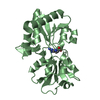
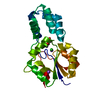

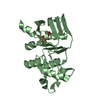
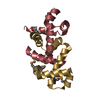
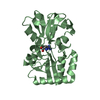
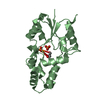
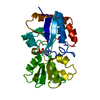
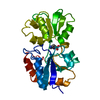

 PDBj
PDBj









